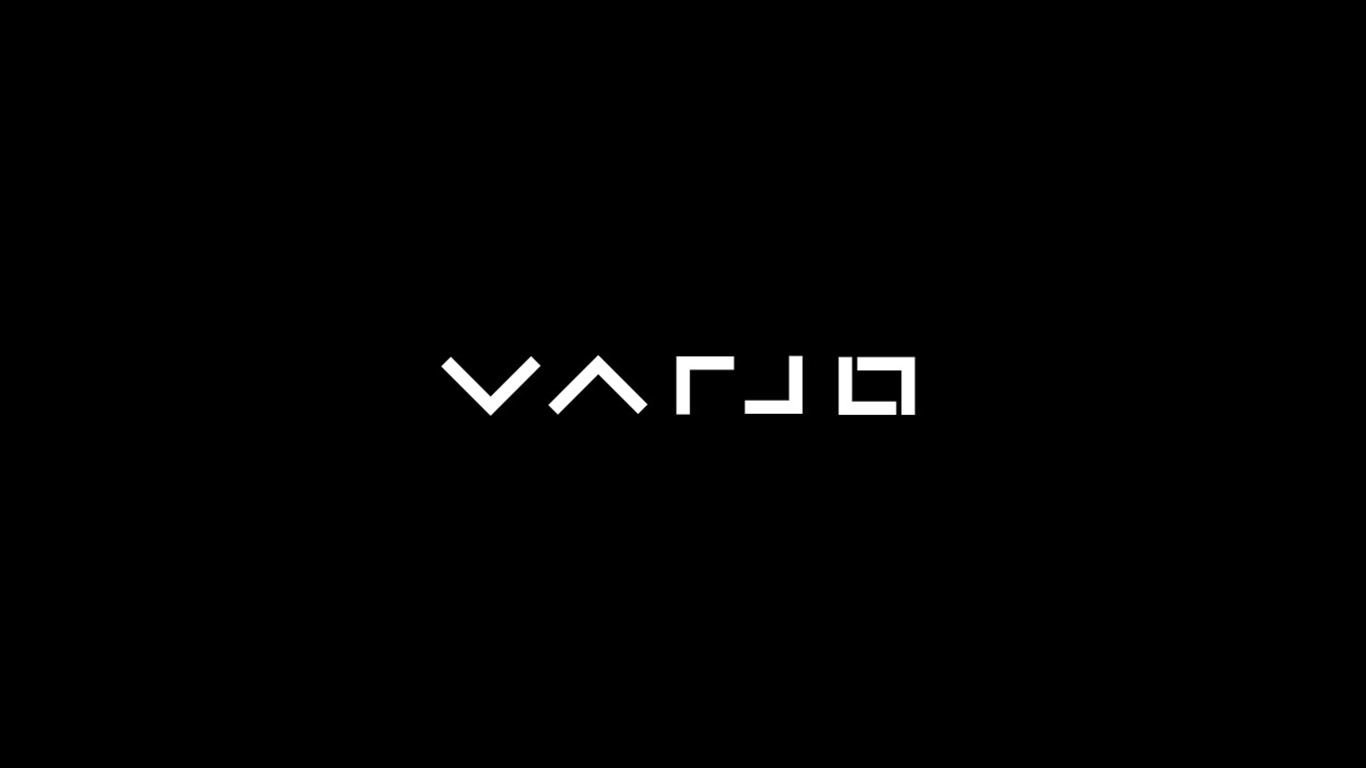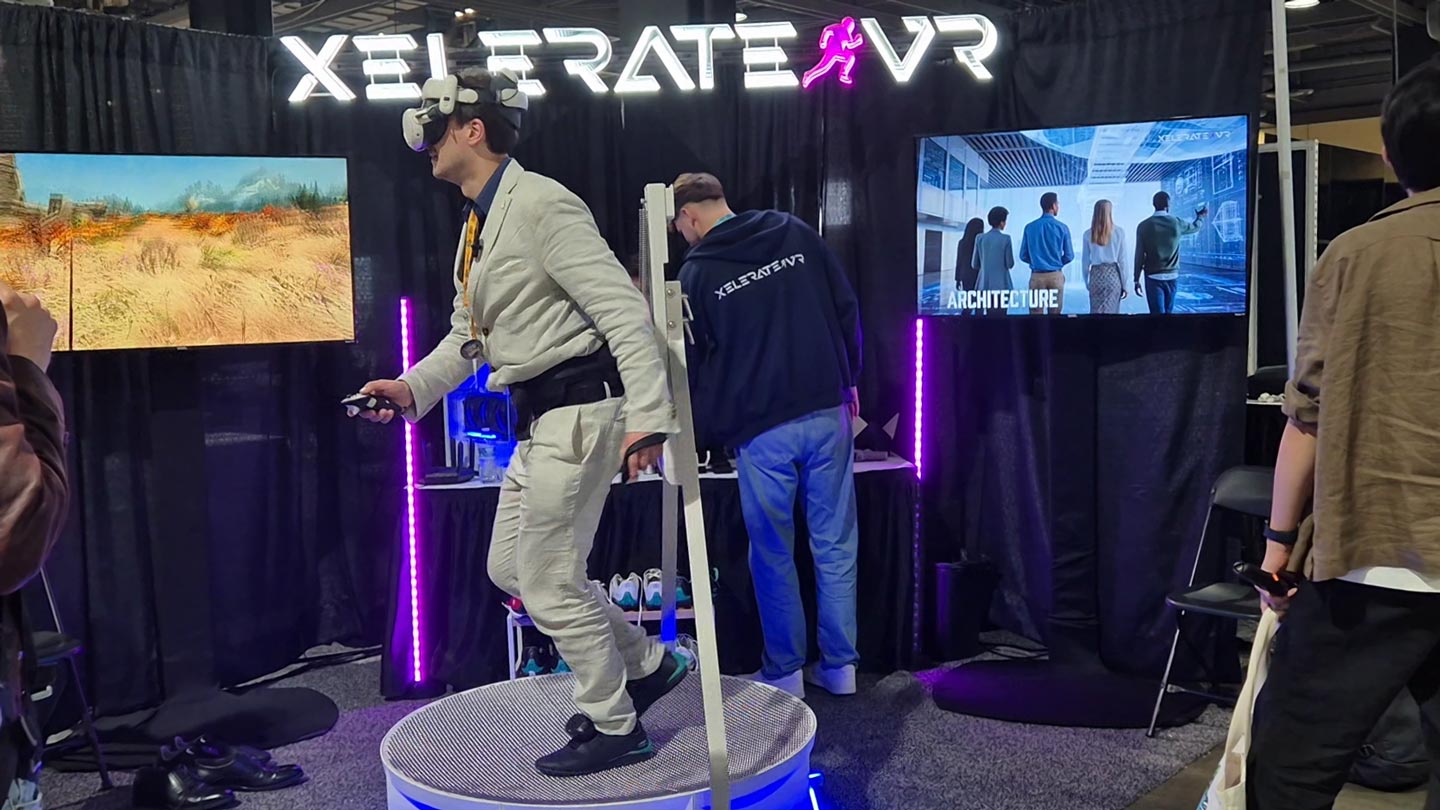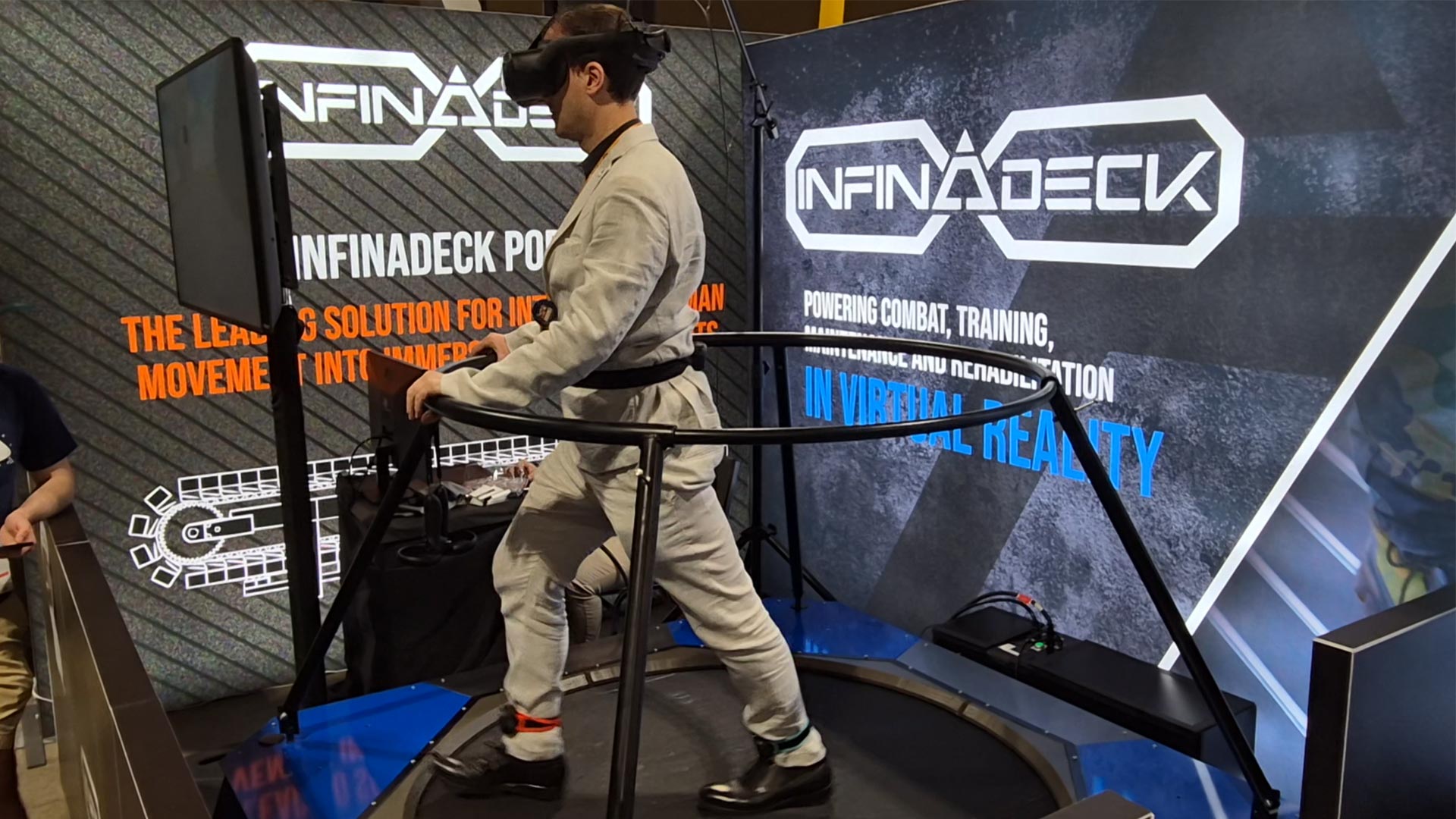Varjo talks with me about its human eye resolution VR headset and its mixed reality add-on (that will be available at AWE 2019)
Varjo. If you follow the evolutions of the virtual reality ecosystem, for sure you know this name: it is a Finnish startup working on developing a headset that features human-eye resolution. They took an approach similar to foveated rendering, but actually developed in an original way. Instead of downgrading the areas of the screen that your eye isn’t looking at, they aim at upgrading the area of the screen that falls inside your fovea. This is possible thanks to the use of two screens: a standard VR screen where the scene is rendered on and a high-resolution microdisplay that just renders the area of the frame that is at the center of our vision. Thanks to some optical magic, this high-resolution image gets superimposed to the standard resolution one, resulting in a VR display that has no (and I underline NO) screen door effect.
https://gfycat.com/plaingraciousaurochs
(Thanks to Road To VR for this explanatory GIF)
This startup is of course very interesting and also very ambitious. Its first batch of headsets is about to ship, but with the high-resolution screen fixed at the center of the vision, so that doesn’t follow the eye movements, because this is the present solution that works without issues.
I’ve always been very curious about this company and about its products, so I’ve been honored to be able to interview its CEO Urho Konttori, that has kindly answered all my questions (even if he refused to unveil me Varjo’s secrets, damn…). If you want to know more about Varjo, have a nice reading!
Hello, present yourself to my readers!
Hi, I’m Urho Konttori, CEO and founder of Varjo. Varjo is now two years old, and I have been privileged to grow the company so much in so short time: it feels like a great privilege.
Explain to the few people that still don’t know Varjo, what is your company and what it does
Varjo makes human eye resolution VR headsets and brings those to the market this year. That sounds so simple, but we are 40x resolution of the best competitor headset, HTC Vive Pro. It’s almost a decade ahead of its time, really enabling immersive computing to begin.
Why do you think that your product is revolutionary? What new kind of applications will it allow?
Sure, having full human eye resolution makes it possible to simulate visually anything, right? So, if you are a designer, be that car, jewelry, phones or kids toys, what this means is that you can fully trust that what you see inside Varjo headset is what you get after it’s someday finally manufactured. What this in turn means, is that your development time speeds up considerably and quality goes up. You can iterate faster, you can get opinions better.
For training&simulations, the same things. Your simulation can look 1:1 to real life. Further, we’ve done best-in-class eye tracker ourselves that allows devices almost mind-read you during test scenarios and adjust you accordingly. Say, you are trying to learn how to start a plane. You follow a certain sequence to turn on the systems. But did you look at the oil gauge in the beginning? If you didn’t, the computer can go: beep, try again.
What are the technical specs of your headset?
You can read some of them on our website:
- Context display: 1440 x 1600 @ 90Hz
- Varjo Bionic Display™: 1920 x 1080 @ 90Hz
- Integrated 100Hz stereo eye-tracking
We’ll be announcing the full spec really soon.

Does it work with Steam VR Tracking v2? Will it work with Knuckles?
We support fully Steam gen 2.0. Knuckles are supported as are any 2.0 accessories. Also, older 1.0 Steam accessories like Vive pucks are supported.
What kind of computer do I need to run such a monster headset?
We use 1080 Max-Q laptops for demos. VirtualLink will make connections so much better in the near future, I can’t wait to switch to using 2080 laptops. Overhead is not that much more with single pass stereo, and the new single pass quad will reduce it further.
What will be the price of this awesome technology?
We can’t tell that quite yet, but what we have told before, it’s between 5k and 10k.

What are your target customers? Who does absolutely need such a high resolution?
Who wouldn’t? I mean, once you have tested human eye resolution, there is no going back. Seriously, even games would be so different with our headset. But really, our customer base will be in the enterprise segment in the beginning. Engineers, architects, and designers working on massive projects. Training and simulations in the aviation industry will be completely transformed when you can start replacing typical classroom desktop sessions with VR, but even more so when the experience is actually comparable to that of full dome simulator.
I admit that I’m a bit skeptical about you being able to provide a future system that will be able to move the high-resolution region to follow the human eye. This is because it will require some mechanical device that moves terribly fast and a lot of times without breaking on the long run. How is it going the research in this sense?
We’ve done dozens and dozens of prototypes with different technologies. We have a system which is completely silent, moves images 10x faster than the eye, fits in a lunch box, but still would need one scale down step. We’ve also implemented versions that have really small size but make some noise. The main reason we are bringing our first product to the market as solid state, is that we improved the optical size of human eye resolution so much, that we felt it will not need to be moved for the first product.
The biggest issue you have with systems like this is that it needs to be perfect from day one, reliable as hell and totally silent. We are not ready to launch such a product yet, but you really need to try out our device, it’s an eye-opener!
I love your Mixed Reality addon. Can you describe it to me?
Sure. Our device’s front plate can be removed (one screw), and then you can replace it with another one that expands the device from being VR device to becoming an XR one.
What we have here is two really high-quality cameras and ISPs (image signal processors) from Sony and Socionext. These digitize the world at 26MPIX, 90 fps. It’s insane amout of data processing, and our latency is ridiculously low. Data is processed and sent to the GPU at the same time as camera sensor is being red. It’s phenomenal. And the quality. Fantastic. You can read A4 at roughly an arm’s length. It’s not all the way to the VR display resolution level, but it’s completely in its own league. Resolution is like night and day compared to anything out there.
This means that we can do full field of view mixed reality, where every pixel of the world is fully in applications control. It can mix it with virtual content, remove things, add things, things can be opaque, reflective, even opaque. What this means in practice is that you cannot tell apart anymore what is virtual and what is real. Only with Varjo XR, it is actually possible. The downside is that the headset is quite a bit bigger than Hololens and needs to be connected to a PC.
What are its technical specifications?
See above for what I can reveal now. I’d love to lock in officially more, but that’s how far we go today.
What are the target customers of the add-on? Did you build it having what kind of applications in mind?
It works wonders for immersive entertainment, design. Training can be expanded to include real-world objects with more ease, even be used in vehicles. It really enables you to change the world around the user while keeping all the interaction elements real. This is huge again for the training.

What will be the price and release date of the headset MR add-on?
Honestly, we haven’t decided yet on the price, but we will have it available at AWE 2019.
Are you working on future accessories? And are also working on partnerships with other companies (e.g. for eye-tracking, VR suits, gloves, etc…)
Well, we’ve implemented our own eye tracking. I’d love to drop a long list of our partners, but getting the ok for that is such a chore. We work with many in the industry.
When will an awesome VR device as the one you are creating be affordable for us all?
Sooner than you think and slower than you hope. We have a path that makes it happen.
What are your future plans? Maybe a standalone headset?
Tricky question. We believe that there is a huge need for great quality graphics. As long as you need that, you want 500W+ of GPU power, not 5W mobile crippled. Now, making that untethered can be done in many ways, and with different distances. But we have nothing to announce on that now.

What is the exact pronunciation of “Varjo”?
“var-yo”. It means “shadow” in Finnish. Funny story on the name. We came up with the idea at Finnish company Umbras premises. Umbra means shadow in Latin.
Something more that you want to add to my readers?
I saw you turned two already a couple of weeks ago. Congrats, old timer!
As you can see, from this interview you can understand why Varjo is a very interesting device and what are its possible applications. And it is astonishing that such a high-resolution display can run just on a GTX1080 laptop, thanks to the use of the dual screen trick. I’m happy to discover that they are still working on the solution to move the high-quality display following your eyes, but they have not implemented it in the first batch because they haven’t still found the optimal solution that can satisfy its enterprise customers. And I love the Mixed Reality addon: I think that it can redefine reality.
Even if, I have to say, the most important thing about the whole set of questions is that I finally know how to pronunciate “Varjo” name! 😀
I really thank Urho for this cool interview (and for its congratulations on my blog’s birthday): he has been very kind and available for me. I hope to go to Finland and be able to try his device one day!
And I also hope that you will support my blog by subscribing to my newsletter by filling the form below here… 😉
(Header image by Varjo)
Disclaimer: this blog contains advertisement and affiliate links to sustain itself. If you click on an affiliate link, I'll be very happy because I'll earn a small commission on your purchase. You can find my boring full disclosure here.



